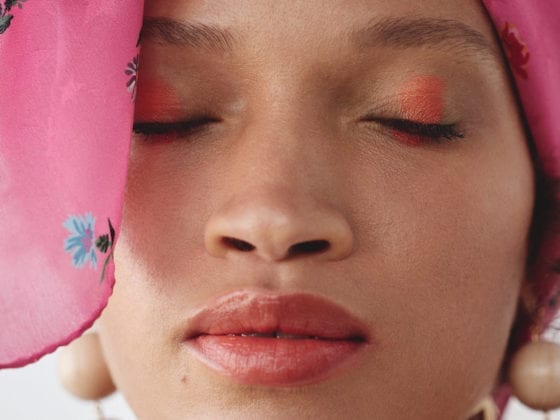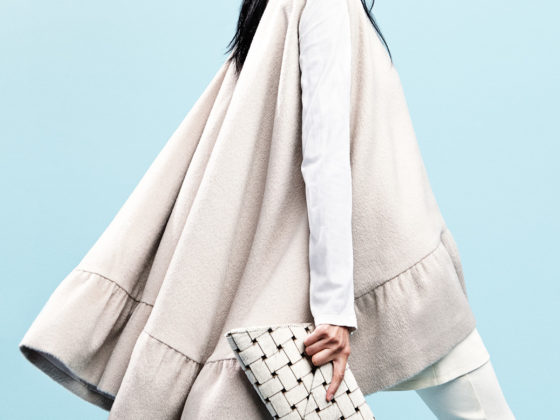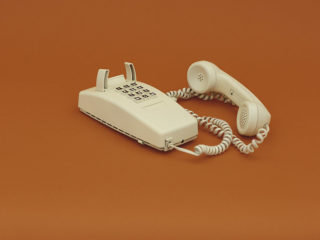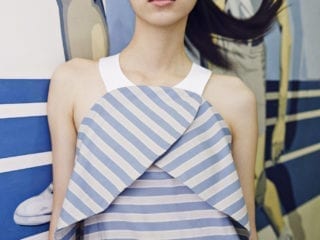There’s no way to beat around the bush. Sun protection is essential, not only to prevent premature wrinkles and damaged skin, but also because of the serious health consequences like skin cancer and vision damage. If you don’t know the harmful effects of excessive sun exposure, then the best place to start is Pt.1 of The Truth About Sun Damage.
Sun Protection Strategies
When it comes to protecting your body from UV rays, you don’t have to hide indoors. In an interview with Darling, Dr. Loretta Ciraldo, MD, FAAD, a member of one of the earliest Harvard dermatology teams that studied the impact of UVA radiation, recommended a three-pronged approach: wear sun-protective clothing, limit exposure during peak hours and apply sunscreen.
Wearing sun-protective clothing.
Ultraviolet Protection Factor (UPF) clothing used to be expensive and hard to find. Now, you can buy UPF apparel at any Walmart or Target. Clothing with UPF 50 protects your body from most UVA and UVB rays.
Another convenient factor? Well, unlike sunscreen, you don’t have to reapply. Don’t want to shop for UPF clothing? Dr. Ciraldo recommends a simple test on your own clothes. Lift it up against the sun and see whether or not any light comes through. If not, then you’ll get some protection against UV rays.
Limiting exposure during peak hours.
The peak hours of UV and HEV intensity are between 10 a.m. and 2 p.m. Avoiding sun exposure during this time can significantly cut your potential damage. Opt to go for a sunrise hike or a sunset picnic.
Avoid sun exposure during this time can significantly cut your potential damage.
Apply and reapply sunscreen consistently.
This should be a daily habit. Look for one that is broad-spectrum and SPF 30+. Protection against HEV is a bonus. Most importantly, look for one that you’ll use regularly. Sunscreen helps protect skin from future sun damage, but there’s a chance that it can also reverse the physical signs of sun damage. How’s that for an anti-aging treatment?
Wear proper eye protection.
Our eyes cannot be forgotten in the realm of sun damage. Darling sat down with one of Europe’s leading ophthalmologists, Dr. Christina Grupcheva, M.D., Ph.D., to understand how to minimize damage to our eyes.
Dr. Grupcheva shared about a study she facilitated where more than 90 percent of participants who wore sunglasses chose them by looks rather than protective properties. Next time you buy a pair of sunglasses, check the sun protection it offers. What is the quality of protection? Is it polarized? Does it give adequate coverage? Choose a pair of sunglasses that provide side protection as well.
Those who wear contact lenses can get added protection by choosing lenses that have UVA and UVB protection. Wearing contacts doesn’t mean you can skip out on the sunglasses though. They protect the cornea, lens and retina from damage, but contact lenses still leave the rest of our eyes exposed. Wearing protective sunglasses is still recommended.
Wearing contacts doesn’t mean you can skip out on the sunglasses though.
“The best we can do is to be as protective as our lifestyle allows and prevent any possible acute and, more importantly, chronic damage,” Dr. Grupcheva said.
But How Do I Get Enough Vitamin D?
Vitamin D is crucial not just for a healthy immune system, but it is also important for calcium absorption, bone health and osteoporosis prevention. How do we get enough if we’re protecting ourselves from the sun?
From the Sun
Between incidental exposure—when you’re driving in the car or throwing the trash out—and improper sunscreen application, according to Dr. Ciraldo, the average person gets more sun exposure than they think. While the research is still sparse, studies are hopeful on the synthesization of vitamin D when we wear sunscreen. Go ahead and reapply that sunscreen.
From Your Diet
Incorporating foods rich in Vitamin D is a great way to maintain healthy levels of the vitamin. In an interview with Darling, Angela Merwin, RD, explained that the recommended dietary intake for adults is 600IU (international units).
“Foods rich in vitamin D include egg yolks, mushrooms, liver, fatty fish (such as salmon, tuna and sardines) and dairy foods (such as milk and yogurts),” Merwin said. “Some non-dairy milks, breakfast cereals and orange juices are fortified with vitamin D as well.”
From Supplements
If getting enough Vitamin D from your diet is difficult, then Merwin recommends taking USP-verified supplements between 600 IU to 1,000 IU. Just don’t go over the daily limit of 4,000 IU. Why the USP verification?
“Supplements aren’t regulated by the FDA, so the USP seal is the only regulating body that checks for potency and purity,” Merwin explained.
Final Sun Protection Tips
- Long commute? Apply sunscreen to your arms or invest in driving sleeves designed to protect your arms from the incidental exposure you get while driving (or while daydreaming in the window seat of the train).
- Your lips get exposed too! SPF chapstick can protect your pout from exposure and lip wrinkles.
- Set an alarm on your phone every few hours as a reminder to reapply sunscreen when you’re out and about. Even the highest SPF can only protect for so long.
- Wearing a broad-brimmed hat can protect your eyes, ears and head from UV exposure. Floppy hats are in again, aren’t they? Grab one for your day at the beach for added coverage.
Next time you head out, check that you’ve got the proper protective measures against sun exposure. Yes, that includes in the wintertime. If you’re still yearning for that summer tan, then book a professional spray tan or just buy a bottle of Jergens Natural Glow. Your body will thank you in the years to come.
What practical measures can you take to protect yourself from too much sun exposure? Which, if any, of these recommendations do you currently follow?
Image via Chris and Sarah Rhoads of We Are the Rhoads, Darling Issue No. 11











